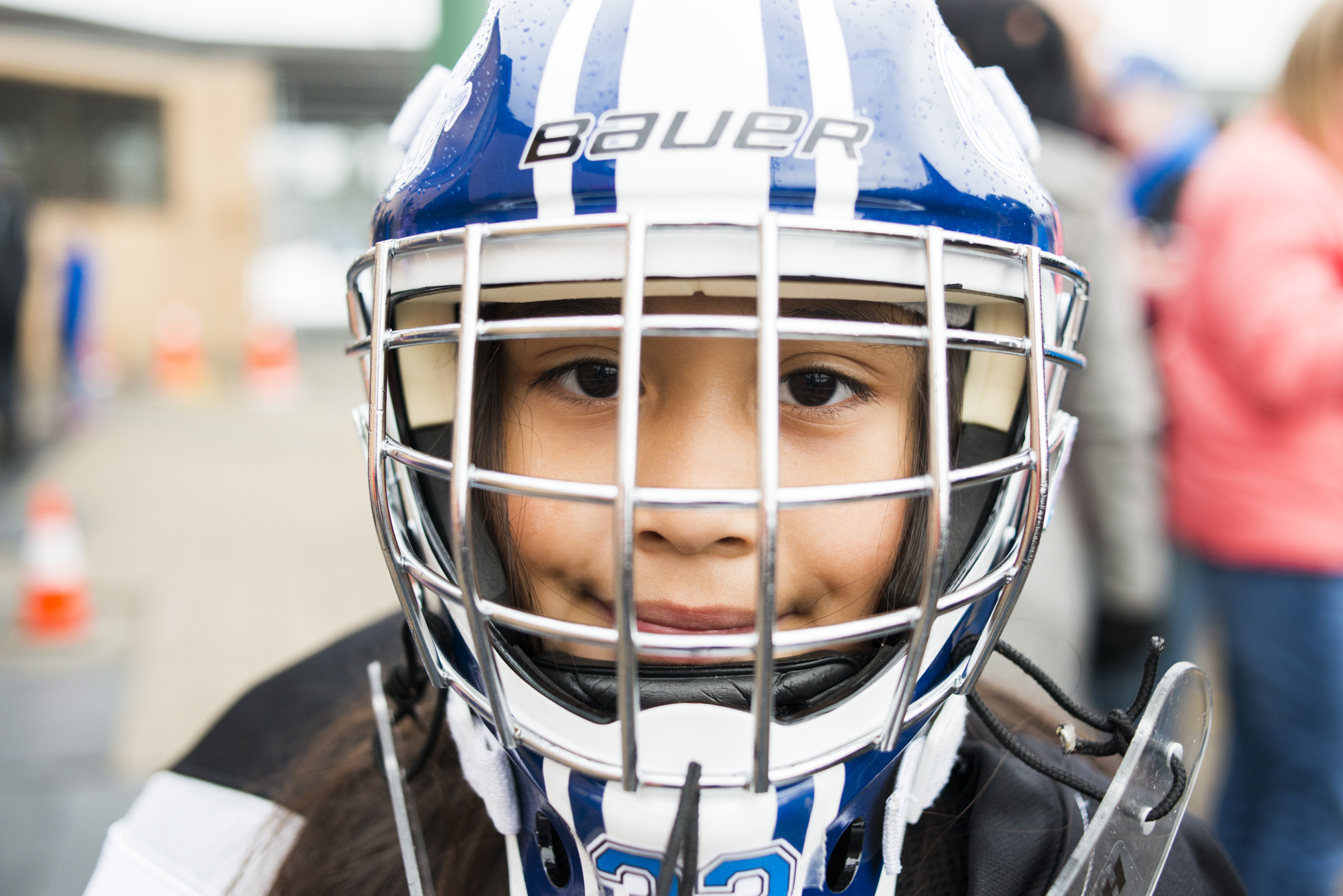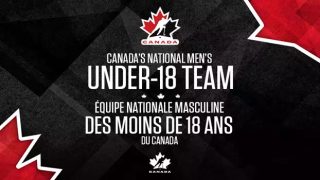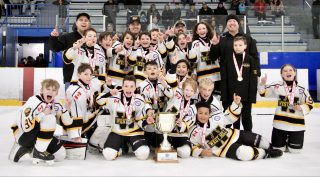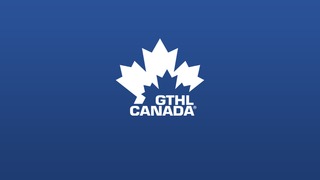Selling the Dream is a 2013 book written by Ken Campbell, who is a senior columnist with The Hockey News, and Jim Parcels, who has been involved in minor hockey as a coach and executive for over 20 years. The book’s subtitle suggests its main message: How Hockey Parents and Their Kids Are Paying the Price for Our National Obsession.
Although Campbell and Parcels pay tribute to certain features of minor hockey in Canada, they are very critical of the over-emphasis and cost of chasing the dream. This issue has become the subject of many arena lobby conversations. In my view, Campbell and Parcels raise some solid points for debate, but they miss a good part of the vibrant Canadian hockey forest when focusing on “outlying” trees.
The authors start by noting the extremely long odds of a young player making it to the NHL. They use a base participation level of roughly 25,000 boys registering to play in Ontario in any given birth year. That includes players in all competitive levels from house league to AAA. Of those, their averaging data shows that 25 will ultimately make it to the NHL for at least one game. As Campbell and Parcels put it: “… on average, the chance that a player registering for minor hockey for the first time will play even one game in the NHL is a paltry 0.1 percent,” which they suggest is a lesser chance than winning Lotto 6/49, considering the cost of minor hockey compared to spending the same amount on lottery tickets. And they calculate that the chance of a player having a real NHL career lasting five or more seasons is 0.05 percent – i.e. 1-in-2000. Even for players who make it to the OHL or NCAA Division 1, the odds of having an NHL career are long. Their sample calculations show that the odds of an OHL player having a 5-year or longer NHL career are about 8.5%, and the odds for an NCAA player are about 2.6%. Of course, even making it to the OHL or Varsity hockey level, let alone to professional hockey, is a very long shot.
These numbers will probably not surprise many hockey parents. But the central theme of Campbell’s and Parcels’ book is their suggestion that, despite these odds, many parents believe that their child can capture the dream if they spend enough time practicing and playing, and if the parents dig deep enough into their pockets to fund that effort. And the authors suggest that too many people in the business of hockey are taking advantage of this belief and “selling the dream” to naïve buyers.
Campbell and Parcels refer to the “10,000 hour rule”, made famous in Malcolm Gladwell’s 2008 bestseller, “Outliers”. Based on the work of social scientists, the Gladwell book argues that, while natural ability is certainly an important factor, to get really good at anything requires at least 10,000 hours of deliberate practice over at least 10 years. Gladwell tells illuminating stories: of Mozart who started writing music at the age of six; of the Beatles playing eight-hour sets seven days a week in Hamburg nightclubs before they starting recording hits; of Bill Gates starting to learn programming as an eighth grader at one of the first elementary schools in the U.S. to have a computer lab; and other stories suggesting, in Gladwell’s words, that “what truly distinguishes their histories is not their extraordinary talent, but their extraordinary opportunities.”
Campbell and Parcels suggest that hockey parents have accepted this idea of the 10,000 Hour Rule. Furthermore, they suggest that many parents believe that the necessary hard work and dedication can be “bought”, by seeking out elite programs, private instruction, dry- land training, hockey academies, summer hockey teams, etc. They chronicle the substantial costs of such programs.
But Campbell and Parcels argue that the 10,000 Hour Rule – at least for hockey and other sports – is “rubbish”. They say that the whole idea gives rise to false hopes for most young players chasing the dream. The authors say “to minimize the importance of natural talent is … absurd.” Other commentators have also been highly critical of the 10,000 Hour Rule. A recent book by David Epstein of Sports Illustrated, “The Sports Gene”, is a direct challenge to the theory. He suggests that the world’s best don’t need nearly 10,000 hours of practice, because talent is, to a great extent, in the genes. He cites examples from track and field such as world class high jumpers, Jamaicans dominating sprinting and Kenyans excelling at long distance running, and examples from other sports as varied as darts and skeleton.
But Gladwell, in a New Yorker article, says that the critics have misunderstood his writing. He says that deliberate practice is what separates the best from the rest “within a group of talented people”. In other words, to get to the top, you need both natural talent and hard work for a long period. Furthermore, he points out that the 10,000 Hour Rule only applies to cognitively demanding activities. He acknowledges that “in instances where there are not a long list of situations and scenarios and possibilities to master – like jumping really high, running as fast as you can in a straight line, or directing a sharp object at a large, round piece of cork – expertise can be attained a whole lot more quickly.” In that respect, he refers to Epstein’s example of people who made the Australian winter Olympic team in skeleton after no more than a few hundred runs. (As most will know, skeleton is similar to luge, and one can’t help but be reminded of Jerry Seinfeld’s comments about his own chance for Olympic success in “involuntary luge.”)
Gladwell asserts that the original 10,000-hour theory, first published more than 40 years ago in American Scientist by Herbert Simon and William Chase, remains true in cognitively demanding fields – i.e. “there are no instant experts in chess.”
One would have to say that hockey – perhaps the fastest and most dynamic sport of all – fits into that category.
Another debatable issue in regard to achieving athletic success is: when should a child specialize? Some parents are enrolling their kids in elite programs at younger ages in order to “get a jump” on their peers. But many sports scientists note that it is a strong base of general athleticism, which will determine the ability to acquire sport-specific skills later on. A renowned Australian high performance institute has their young athletes play many different sports and hold off on specialization as long as possible. And Epstein refers to a study in the 1970s of a group of one hundred top 8-12 year old German tennis players, which showed that those who tested as the best all-round athletes were better at acquiring tennis-specific skills and went on to succeed at higher levels in later years; including the young girl who was at the top of every test: running speed, hand-eye skill, concentration and competitive desire – a girl named Steffi Graf. Epstein also notes recent sports science research, which shows that “trainability” is, itself, a talent that may be linked to a person’s genetic footprint.
That is, certain gene variants tend to be predictors of an individual’s capacity for aerobic and strength improvement. Another study in Denmark showed that soccer players with more fast-twitch muscles tended to be faster runners but also more prone to injury before they reached the top level, and so a more individually customized training approach should be taken.
This “nature vs. nurture” debate in sports goes on. Although sports scientists may emphasize different elements, as Epstein puts it: “sport skill acquisition does not happen without both specific genes and a specific environment, and often the genes and the environment must coincide at a specific time.”
So now let’s return to the basic critique of the minor hockey world in “Selling the Dream”. That is, the authors’ argument that, because of the very long odds of a young player ever making the NHL or another professional league or even the OHL or college hockey, and because, due to basic genetics, many hours of practice won’t necessarily get results but come with very high costs, “hockey needs to be protected from itself”. They argue that most kids are chasing an  unattainable dream, minor hockey has become too organized around that dream, and families are paying too high a price in the chase. They suggest that it’s turning childhood into work.
unattainable dream, minor hockey has become too organized around that dream, and families are paying too high a price in the chase. They suggest that it’s turning childhood into work.
But it seems to me that this book is really directed at a small slice of the hockey universe. Virtually everyone understands that, over time, minor hockey becomes a steep pyramid. In talking about the high costs of pursuing an NHL career, Campbell and Parcels are, for the most part, addressing only those near the top of the top tier. The vast majority of players and families participate simply because of love of the game and the social experience. They enjoy competing at their chosen level and spending time with teammates and friends. It remains much the same experience that the authors lament has been “lost” because of minor hockey now being played mainly in organized leagues as compared to in parks and on frozen ponds.
I would encourage the authors to spend more time at local arenas, and to observe the great hockey culture flourishing there. And while hockey, like many other sports, has certainly escalated in cost, one can still register for a house league program in Toronto for around $500 per season.
Although I am certainly not an expert in child psychology, I would also take issue with another argument in this book. Campbell and Parcels talk about the downside of the effort to excel. They refer to studies by Alissa Quart (who certainly is an expert, as she has a master’s degree from Columbia, did a fellowship at Harvard and has written for The New York Times and The Atlantic Monthly). In her book “Hothouse Kids: The Dilemma of the Gifted Child”, she says that the effort to produce gifted children is a troubling phenomenon and places overwhelming pressure on gifted kids to achieve. She refers to what is called the “Icarus effect” – profiling a number of gifted children who turn out to be unhappy adults because, in later life, they couldn’t live up to earlier expectations. Campbell and Parcels state: “In other words, parents who foster kids’ desire to excel may actually be harming them, since the hunger for success will never be satisfied. Kids will perform better and better, and never experience the reward they’re seeking. So the better they do, the worse they feel.”
I’m sure there are some examples of this in hockey – at every level of competition, not just at the elite level. But while being realistic about one’s strengths and weaknesses is important, and hockey parents should have their eyes open when considering program costs, the pursuit of excellence should not, in my view, be avoided because of the possibility – or even the probability – that one may fall short.
I prefer what Drew Faust has called the “parking lot theory of life”. Look first for a spot in the front row. You can always circle back if you have to.
In other words, craft your own Plan A – at whatever you do, for whatever your level of competition – and don’t settle for Plan B until you have tried Plan A.








